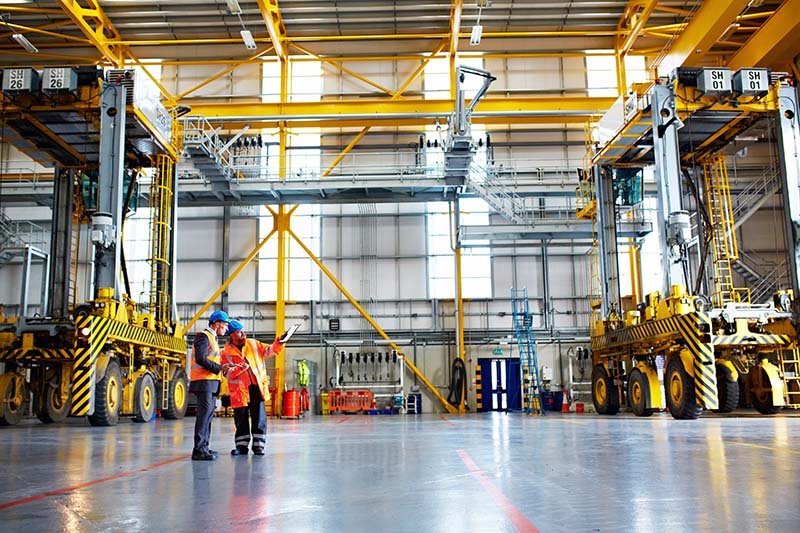Industrial and logistics facilities are vital components of Britain’s critical national infrastructure. With the unprecedented strain of the past two years, the sector has endured fuel shortages and a deficit of HGV drivers – but not least of those problems is the lack of warehouse space.
This isn’t a new problem; since 2011, the supply-demand dynamics of warehouse space have been unbalanced, with annual take-up averaging 34 million ft2 – 46% higher than the net delivery of new space. However, it’s safe to say that the current economic instability has exasperated the issue.
According to recent analysis from real estate firm Colliers, there is currently only 18.1 million sq. ft. of warehouse space available in the UK, representing a vacancy rate of only 3.26 percent. Despite the fact that the logistics sector has responded to the shortage by building 26 Wembley Stadiums worth of additional space in 2021, the great bulk of it has already been rented or is under offer.
The industry finds itself in this situation because of two main factors: COVID-19 and Brexit. Demand for warehousing has rocketed following increased online sales throughout the pandemic and stockpiling. In this week’s blog, we’re exploring the factors influencing the current surge in commercial property and how asset managers can respond to the heightened demand.

Brexit
Prior to the end of the transition period on the 31st of December 2020, businesses were choosing warehouse storage solutions to store a wide variety of goods ranging from food produce to clothing. Considering that over 40% of the UK’s food and drink is imported from overseas, businesses knew that stockpiling goods would be key in ensuring that supply did not run low once Britain left the EU.
We can expect the need for warehouse space to increase exponentially as the digital economy continues to expand, and supply chains acclimatise to post-Brexit Britain. European companies want to be closer to their customers in the UK, therefore supply chains have been re-engineered along borders. Having a more local presence has become strategically important for businesses.
E-commerce
The warehouse shortage has also been accentuated by the rising demand for space from the e-commerce sector. Online retail sales grew significantly during the pandemic – a trend that’s predicted to continue as many consumers have become accustomed to the convenience of internet shopping.
Due to this, experts believe that rents will continue to climb sharply until 2022. Amazon alone has taken millions of square feet of warehouse space, accounting for more than half of e-commerce-related usage this year.
COVID-19
Meanwhile, the pandemic has exposed the vulnerability of supply chains designed for optimum efficiency. Fears of shortages caused many people to store home goods at the onset of the pandemic.
When supermarkets introduced rules to prevent hoarding, this put their home-delivery capacity under massive pressure. Periodic shortages of everything from face masks to bricks have encouraged manufacturers and retailers to seek more storage space.

East Anglia
In March 2021, the Chancellor of the Exchequer announced Freeport East as one of eight new Freeports in England. Located in Felixstowe and Harwich, the redevelopment will transform the port into a hub for global trade and national regeneration.
Since this announcement, the East of England has seen a diverse range of occupiers looking to capitalise on the benefits afforded by being located on one of the designated schemes. Freeport East will drive further requirements, in particular along the Eastern stretch of the A14 corridor, which is already seeing unprecedented levels of demand as a result.
According to Savills latest Big Shed Briefing, take-up of warehouses over 100,000ft2 plus in the East of England rose 136% above the long-term annual average to hit 2.66 million ft2 in 2021. Such is the strength of demand that schemes with an original expectation of lasting 10–15 years look to be filled in a four or five year period.
Peterborough One Commercial Gateway
Our asset, PE1 is located to the north east of Peterborough City Centre on the A15 Paston Parkway/A1139 Frank Perkins Parkway – Peterborough Ring Road and half a mile south of junction 20 of the A47 trunkroad, with easy access to A1 junction 17. The A1(M) is a strategic North-South link between London and Edinburgh which provides an East-West dual carriageway connection from the deep water ports of Felixstowe and Harwich to the Midlands motorway network.
Considering this asset’s key positioning, PE1 has been earmarked as the site of an innovative logistics hub. The location for which is a 1.78 acre plot opposite a brand new Aldi store and viewable from one of the busiest roundabouts in the UK.
New opportunities
In rural locations, like East Anglia, there could be considerable opportunities for agricultural landowners to convert existing buildings for use as distribution centres to serve the growing number of households moving to the countryside.
At Targetfollow, we understand how logistics developments are reshaping the sector, and we look forward to a vibrant future in commercial property. For all of the latest updates regarding Targetfollow’s 2022 projects, visit our Facebook, LinkedIn and Twitter.





